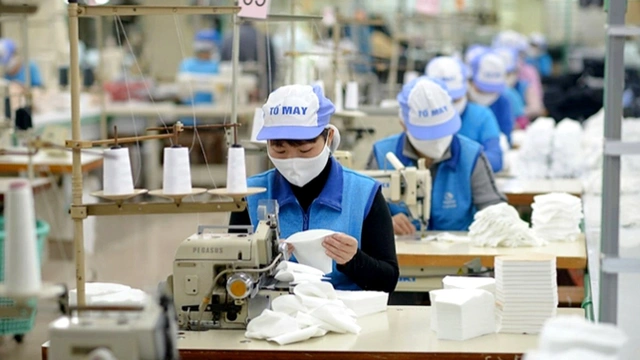Shortage of high-quality textile and garment workforce: What does the ILO recommend for Vietnam?
Manpower remains a key advantage
In a recently published report, the International Labor Organization (ILO) recognizes Vietnam’s potential to capitalize on the strong growth of the textile and garment market in the coming decades. Although the country’s low labor cost advantage is gradually diminishing, improved competitiveness and better transport infrastructure will help domestic textile and garment manufacturers manage and reduce production costs.
Regarding human resources, the industry benefits from a demographic dividend – Vietnam has a large and relatively young population – along with improvements in vocational education and skill development. These factors provide opportunities to enhance labor productivity and strengthen competitiveness.
This is evident in the sector's workforce growth from nearly 1.8 million workers in 2012 to approximately 3.4 million in 2023, with over 3 million in garment manufacturing and 324,000 in the textile sector.
However, the ILO report also highlights an aging workforce in the textile and garment industry, making it increasingly difficult for businesses to recruit young workers.
The occupational structure has remained relatively stable, with medium-skilled jobs consistently accounting for 92-94% of employment in the sector. However, there has been a noticeable shift within this skill category.
Specifically, jobs in "craft and related trades" are gradually transitioning to "assemblers and machine operators." This reflects the rising trend of automation in production and job restructuring within larger enterprises. As a result, the demand for semi-skilled manual labor is declining, while the need for semi-skilled workers who can operate and maintain machinery is increasing.
The rapid advancement of technology, automation, and artificial intelligence is reshaping both production processes and the labor market in the textile and garment industry. To address these changes, a comprehensive effort to enhance workforce quality is essential.
 |
| The textile and garment industry is providing jobs for 3.4 million workers. Illustrative image |
Solutions to improve workforce quality
According to the ILO report, Vietnam has 577 public education institutions providing textile and garment-related training programs at three levels: college, intermediate, and elementary. These include 113 colleges, 107 technical high schools, and 357 state-run training centers. Additionally, about 38 universities in Vietnam offer textile-related majors, but enrollment remains challenging due to competition with other academic programs.
Several initiatives, such as the Better Work Vietnam Program, along with various global brands, regularly conduct training sessions for employees and workers. These focus on areas like compliance, soft skills, occupational health and safety, and supply chain management.
Despite ongoing efforts, the number of trained workers remains limited. Between 2015 and 2023 (excluding 2020 and 2021 due to the COVID-19 pandemic), the textile and garment industry added an average of over 200,000 workers annually. However, trained workers accounted for only about 40% of the total workforce.
To enhance workforce quality, many businesses have implemented on-the-job training tailored to industry-specific skills and practical needs.
The ILO recommends that the government and enterprises improve training effectiveness and implement supportive policies, particularly in developing skills essential for upgrading Vietnam’s textile and garment value chain.
Key measures include:
Boosting productivity and wages while improving working conditions and career progression opportunities to attract and retain workers.
Enhancing the industry's image to attract students and workers by increasing public awareness of the sector’s growth potential and its role in Vietnam’s economy.
Strengthening pre-employment and in-service soft skills training with active participation from multiple stakeholders.
Promoting quality assessment, certification, and accreditation for industry training programs.
Increasing industry involvement in skill development to align training programs with labor market demands.
Improving budget allocation for skills training and workforce development based on industry needs.
By implementing these strategies, Vietnam’s textile and garment sector can strengthen its workforce, improve productivity, and maintain competitiveness in the evolving global market.Article URL: https://ven.congthuong.vn/shortage-of-high-quality-textile-and-garment-workforce-what-does-the-ilo-recommend-for-vietnam-57226.html
Print ArticleCopyrights of Vietnam Economic News, All rights reserved VEN.VN | VEN.ORG.VN
